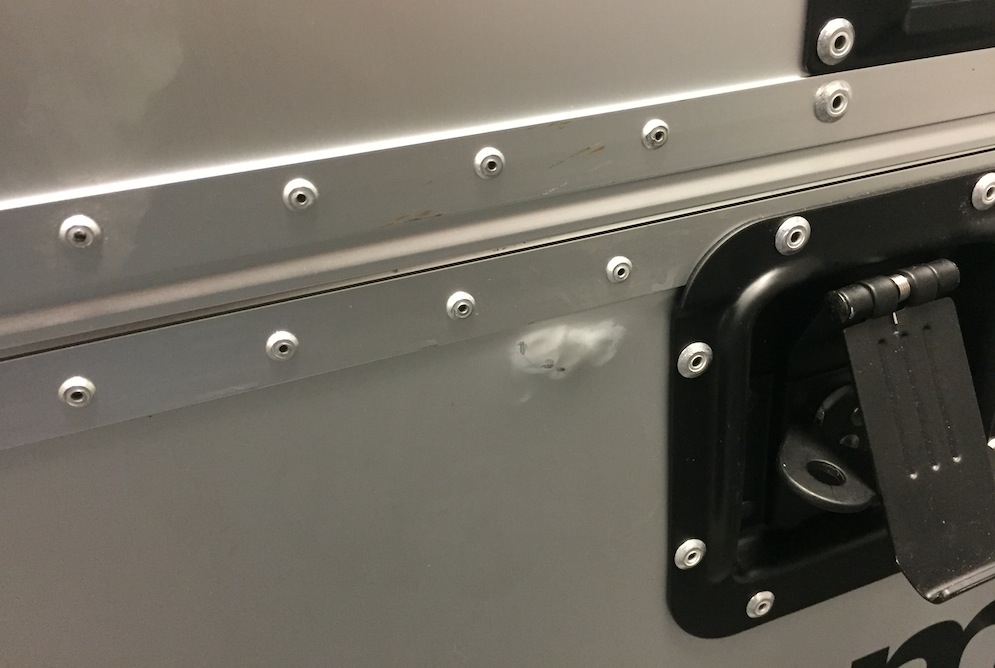Buxum Tourmalet Bike Box review
The Buxum Tourmalet is a distinctive-looking hardcase bike box made from aircraft-grade aluminium

A very well made box that is fairly easy to pack, easy to push around and will keep your bike safe. The downsides are that it is at heavier end of the scale when it comes to bike boxes, the price is high and it can get dented or scratched easily.
-
+
Looks
-
+
Quality handles and wheels
-
+
Easy to push around
-
-
Heavy
-
-
Dents/scratches easily
-
-
Expensive
-
-
Disc-brake rotor removal recommended
You can trust Cycling Weekly.
The Buxum Tourmalet Bike Box is a very bling-looking means of transporting your pride and joy by aeroplane. Fabricated from aluminium sheets pop-riveted together it arguably shares more engineering DNA with a Spitfire than with other bike boxes on the market.
Features
The Buxum opens and closes by way of four impressively sturdy twist latches (two on each side). These are very easy to operate and can be used in conjunction with cable ties and padlocks for added security. The twist latches stand out as being the best I have encountered on a bike bag or box. The quality of construction and components is felt throughout. The strategically placed handles feel good in the hand and work well too when loading or pushing the box.

I have been very impressed with the wheels too. Any travelling cyclist who has had to push their bike around a street, station or airport will appreciate how good wheels can make a real difference to your quality of life in those situations. Thanks to high-quality wheels, manoeuverability and pushing is excellent, meaning that when negotiating airports you won't be stressing about colliding with small children.

To improve the strength and rigidity of the box, there is also a crush pole that is inserted during the packing process. To pack the box you simply remove your pedals, wheels and seatpost. Handlebars can either be removed at the stem plate or steerer tube. Basically this is what you do with most leading bike bags and boxes. The key detail is that the Buxum Tourmalet allows you to leave the rear mech attached.

How well does it perform?
To test the box I flew to Majorca and transported a Cipollini NK1K inside it. The box is claimed to weigh 12.5 kgs with the bike weighing 7.4kgs. Into the box I also placed some basic tools such as Allen keys and my saddle pack. I also packed some Lycra into the box, which doubles up as padding. I placed my pedals into my hand luggage. Packing the bike into the box is fairly straightforward since it doesn't require removal of the rear mech.
The latest race content, interviews, features, reviews and expert buying guides, direct to your inbox!

The bike is secured via the dropouts and tightened with built-in skewers, in a design used by many bike stands. One niggle is that the front skewer is hard to tighten as it situated quite tight in against the inside of the box. This ergonomics of this interaction could perhaps be improved.

The wheels are deflated and inserted down the sides of the box. The wheel bags have a slot to allow for insertion of the crush pole. This does mean that if you have a solid disc wheel you can't use the crush pole. Unfortunately, even though I packed the box lightly it still went over the British Airways threshold of 23kg, hitting the scales at 25kg.
Watch - five tips to get the most from your training camp
This meant I had to pay a penalty fare of £65. Not ideal and something I would have avoided with a Bike Box Alan. By way of a comparison, on our scales the Buxum Tourmalet came in at 12.7kg, which is over a kilogram more than the 11.2kg Bike Box Alan. Although not a huge amount, it can easily be significant if your limit is 23kg as mine was.

Another disadvantage is with regard to disc brakes. The Velovault bike box features recesses to protect disc rotors, which is useful as it means you don't need to remove your rotors in transit. I would be concerned that if rotors were left attached to the wheels they could potentially be bent in transit. My reason for this, is that my rear wheel was able to dent the box from the inside during my travels, which can be seen in the picture below.

To clarify, you can use the Buxum Tourmalet if you have disc brakes: however, my recommendation would be to remove the rotors from the wheels.
The Buxum box draws many admiring glances from fellow cyclists and I like the way it looks. However, after just one journey to Majorca it was already battle scarred. The pop riveted aluminium was covered in scratches, scuffs and dents. While these marks were all cosmetic, I feel anyone who had paid the full retail price for the shiny Buxum box would be disappointed to see it get scratched and dented so easily.
Oliver Bridgewood - no, Doctor Oliver Bridgewood - is a PhD Chemist who discovered a love of cycling. He enjoys racing time trials, hill climbs, road races and criteriums. During his time at Cycling Weekly, he worked predominantly within the tech team, also utilising his science background to produce insightful fitness articles, before moving to an entirely video-focused role heading up the Cycling Weekly YouTube channel, where his feature-length documentary 'Project 49' was his crowning glory.